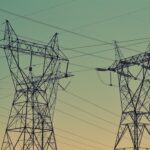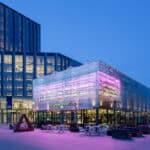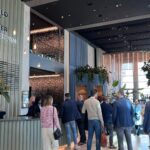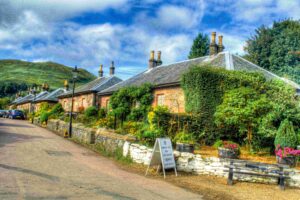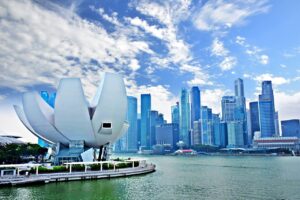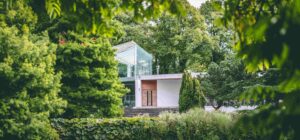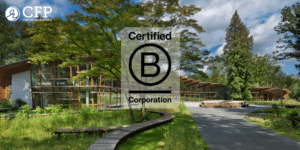
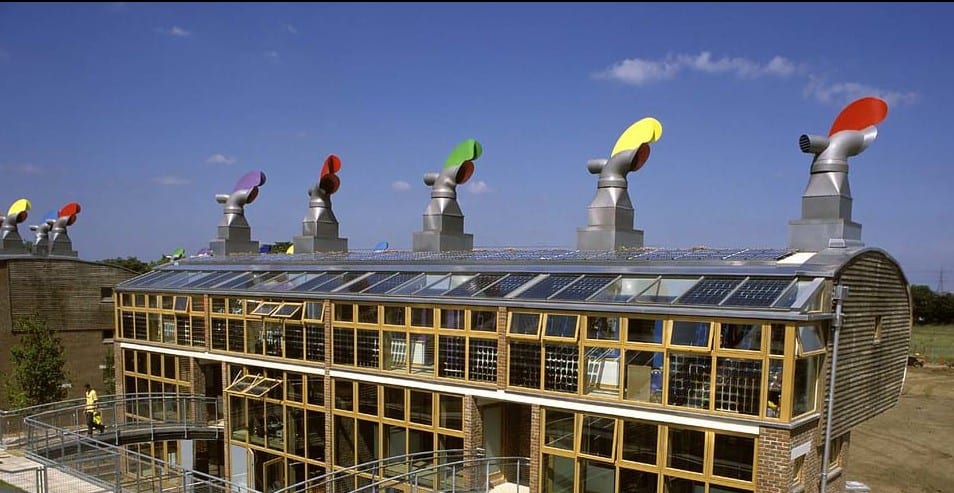
Three inspiring sustainable buildings in the United Kingdom
Sustainability manifests in various forms: from circular food packaging and carbon-neutral buildings to ecotourism. There are also many inspirational examples on the other side of the Channel. This article highlights three of them.
Kielder Observatory, Northumberland

Northumberland National Park is located on the border of England and Scotland. The park is a protected area with a so-called “Dark Sky Par” status. It is one of the best places in Europe to view the Milky Way. An observatory has been built on a mountain from which there is an unobstructed view of the park. The design is the result of a competition entered by 230 architectural firms from all over the world.
The observatory is built from local materials such as Sitka spruce. The building is also completely self-sufficient; the required energy is generated by solar panels and a 2.5 kW wind turbine. There is, therefore, no connection with the energy grid. In addition to the construction and energy supply, other sustainability aspects have also been considered, such as compost toilets.
20 Fenchurch Street, Londen
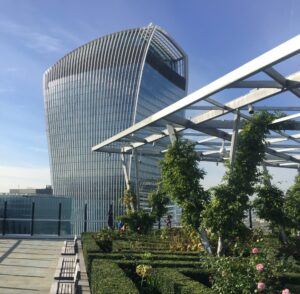
In 2010, a skyscraper was built in the Financial District. This building was nicknamed “The Walkie Talkie” due to its distinctive shape. The 300 kW hydrogen fuel cell is used for heating, cooling and electricity, and this was the first fuel cell in a commercial building. Together with the 27 MWh of solar panels, it has contributed to obtaining the BREEAM Excellent certificate. The 38-storey building has the UK’s largest vertical garden. About 52,000 plants have been placed in the more than 700 m2 facade garden. Most floors house different businesses, but visitors can dine in London’s largest public roof garden on the top floor.
“Fact: In the summer of 2013, temperatures of 90 to 120 degrees Celsius were measured on streets around the Walkie Talkie. The concave glass facade acted as a mirror, concentrating the sunlight—this melted doormats from nearby stores. One reporter even managed to fry an egg in a pan on the pavement. The permanent horizontal sun louvres that have been installed afterwards prevent similar situations from happening in the future.”
– Nanda Verschoor, Account Executive at CFP
BedZED, Londen
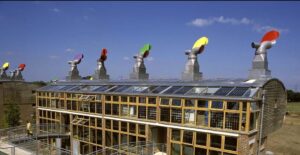
BedZED is more than a building: completed in 2002, BedZED was the UK’s first large-scale, mixed-use sustainable community. It comprises 100 homes, office spaces, a college and community facilities. BedZED was designed to achieve big reductions in climate-changing greenhouse gas emissions and water use.
The design makes it easy for the people living there to have a greener, lower impact lifestyle. Most of BedZED’s homes are heated by the warmth of the sun and highly insulated, with its distinctive wind cowls helping fresh air circulate. Residents rely less on private cars thanks to good transport links and an on-site car club. BedZED is a healthier, happier place to live because of its ample green space, such as the playing field, and neighbourliness, with people knowing at least 20 neighbours by name on average. Residents save an estimated 88% a year on bills for space heating compared to an average UK household. Nearly 20 years after the project’s completion, it still serves as a stand-out example for new developments.
